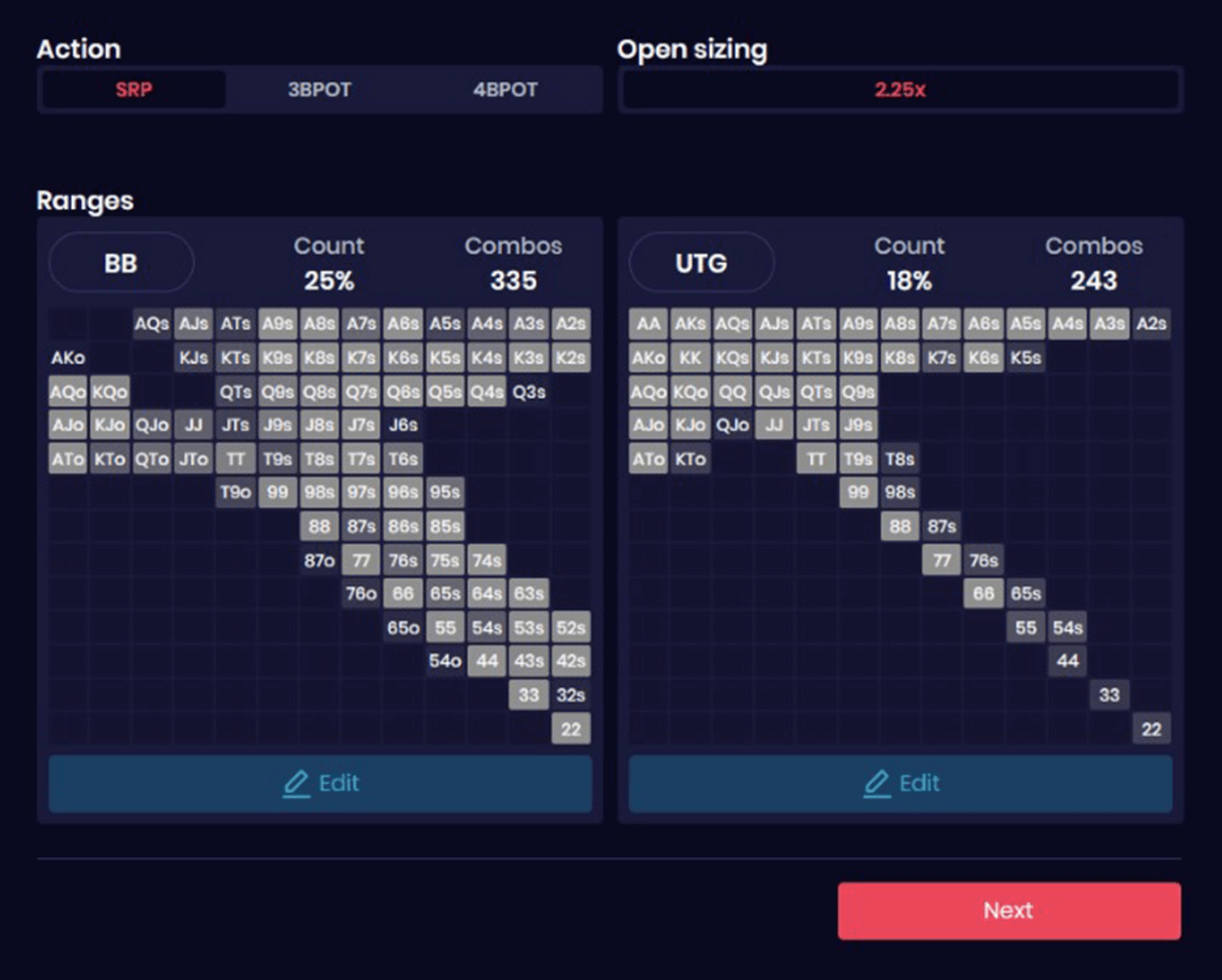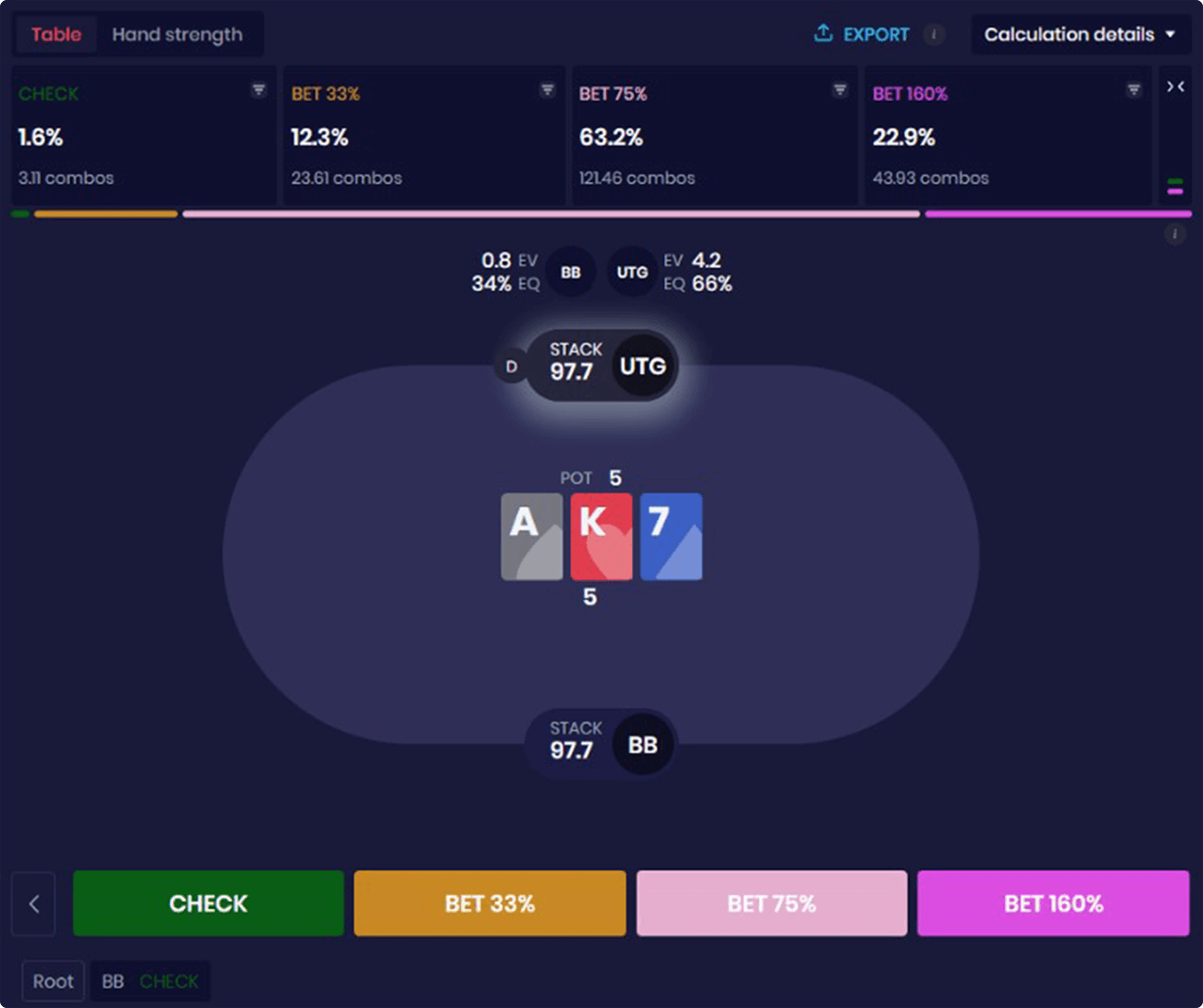Why Understanding Poker Ranges Is Crucial for Your Success?
What does range advantage and nut advantage mean?

A significant milestone in any poker player's development is transitioning from thinking about specific hands to considering ranges.
Many beginner poker players assess their decisions based solely on their hand, while mistakenly placing their opponents on exact, specific hands. If you regularly participate in low-stakes live cash games or tournaments, you've likely overheard other players rationalizing their decisions by pinpointing precisely what hand their opponent might hold.
While successfully guessing your opponent's exact cards can feel rewarding, building your poker strategy around this approach has limited effectiveness. Poker, at its core, involves analyzing combinations and ranges—possible groups of hands your opponent could hold and how they might play them.
To excel and consistently make profitable decisions, it is crucial to embrace thinking in terms of ranges rather than individual hands. This shift broadens your strategic perspective, deepens your understanding of the game, and significantly enhances your poker performance.
What is a range (of hands) in poker?
In poker, a hand range refers to a player's entire set of possible hands at a specific moment during a game.
Ranges can vary greatly depending on the situation:
Wide ranges
For example, when you're in the Big Blind facing an open raise from the Button in a deep-stacked cash game, both your range and your opponent's range will typically be broad, often including about 40-50% of all possible hands.
Narrow ranges
On the other hand, ranges can become extremely tight in critical tournament situations. Imagine a scenario deep in a tournament where multiple players have gone all-in before you. Due to stack sizes and the impact of ICM (Independent Chip Model) considerations, you'll likely need to fold most of your hands, continuing only with premium holdings such as pocket Kings or Aces.
Interestingly, the same ICM principles can sometimes encourage extremely loose play when you are first to act, particularly in satellite tournaments or situations where you hold a significant chip advantage.
How poker ranges shape your GTO strategy
A game-theory optimal (GTO) poker strategy directly results from comparing the players' hand ranges in specific situations. The strength of your range compared to your opponent's range determines whether your strategy should lean toward aggression or defensiveness.
Simply put, if your range in a particular spot contains many strong hands (such as top pairs, two pairs, or better), you should typically favor betting or raising aggressively. Conversely, if your opponent's range is stronger, you should adopt a more passive approach, checking and calling more frequently rather than betting or raising.
Understanding your range in a given spot is fundamental to choosing the correct strategic path.
Preflop ranges, especially for online cash game players, are relatively straightforward. Typically, you can memorize your standard opening, 3-betting, and cold-calling ranges from various positions, adjusting only slightly when encountering opponents who deviate significantly from typical strategies.
However, preflop ranges in tournaments become considerably more complex. In the early stages, when payouts are still far off, ranges tend to be consistent and straightforward, as stack sizes are relatively equal and Independent Chip Model (ICM) factors are minimal. But as you progress deeper into the tournament, particularly upon reaching the final table, each player eliminated creates a substantial payout jump, causing preflop ranges to vary dramatically based on different stack sizes and ICM implications.
So, how do you navigate this complexity? One step at a time.
Before diving deeper, let's clarify two essential terms related to poker ranges that will significantly enhance your understanding and strategy: range advantage and nut advantage.
What is range advantage in poker?
Poker is fundamentally a game of probabilities. Consider a scenario where you go all-in holding pocket Aces against an opponent's random hand. Your Aces will win about 85% of the time, meaning your hand (AA) has approximately 85% equity against a random range, leaving your opponent just a 15% chance of winning.
However, in practical play, your range of hands is almost always broader than just pocket Aces.
Imagine you open-raise from the Under-the-Gun (UTG) position in a 100 big blind cash game, and only the Big Blind (BB) calls. Assuming both players use standard GTO (Game Theory Optimal) ranges:
- Your UTG range typically includes around 18% of the best possible hands, such as premium pairs, suited Aces, broadway cards, and select suited connectors.
- The Big Blind's range is naturally wider, encompassing about 25% of possible hands, but lacking many premium holdings like high pairs and strong broadways.
When comparing these ranges preflop, your UTG range holds an equity advantage of roughly 57% vs. 43%. Poker players call this advantage a range advantage.

What is nut advantage in poker?
A nut advantage occurs when one player's range contains significantly more combinations of the strongest possible hands (typically two pairs or better) than their opponent's range.
Let's return to our previous flop examples to illustrate this clearly:
AK7 rainbow
On this board, the UTG player holds a range advantage (expressed through overall equity) and a significant nut advantage. The UTG player's range includes premium combinations such as AA, KK, and AK - notably absent from the Big Blind's range.
876 with a flush draw
Here, the situation is reversed. Although the UTG player still holds powerful combinations like overpairs and sets, they lack the absolute strongest hands, such as straights and many two-pair combos. Conversely, the Big Blind's defending range connects much better with this board, containing suited combinations of T9, 95, and 54 (which complete straights) and two-pair combinations like 87, 86, and 76. This gives the Big Blind a substantial nut advantage.

Are range and nut advantages always connected?
Generally speaking, range advantage and nut advantage often appear together—having one usually implies having the other. However, this isn't always the case, especially on later streets. Situations can arise where one player holds the range advantage while the other maintains the nut advantage, significantly affecting strategic decisions. This advanced topic merits further discussion in another article.
Summing up:
High-card boards typically favor the original raiser's range (such as UTG).
Low-connected boards usually favor the Big Blind defender's range.
The greater your range advantage, the more aggressive your strategic approach can and should be.
Understanding these concepts is fundamental for developing sound, profitable poker strategies and adapting effectively to different board textures.
There's more to ranges in poker!
Poker ranges are a fundamental aspect of strategic thinking, essential for players striving to elevate their game. Although we've explored the basics, this topic has much more depth. In future articles, we'll examine further range-related concepts in detail.
We encourage you to experiment with range adjustments and explore how they influence your strategic decisions using Deepsolver and its powerful node-locking options.